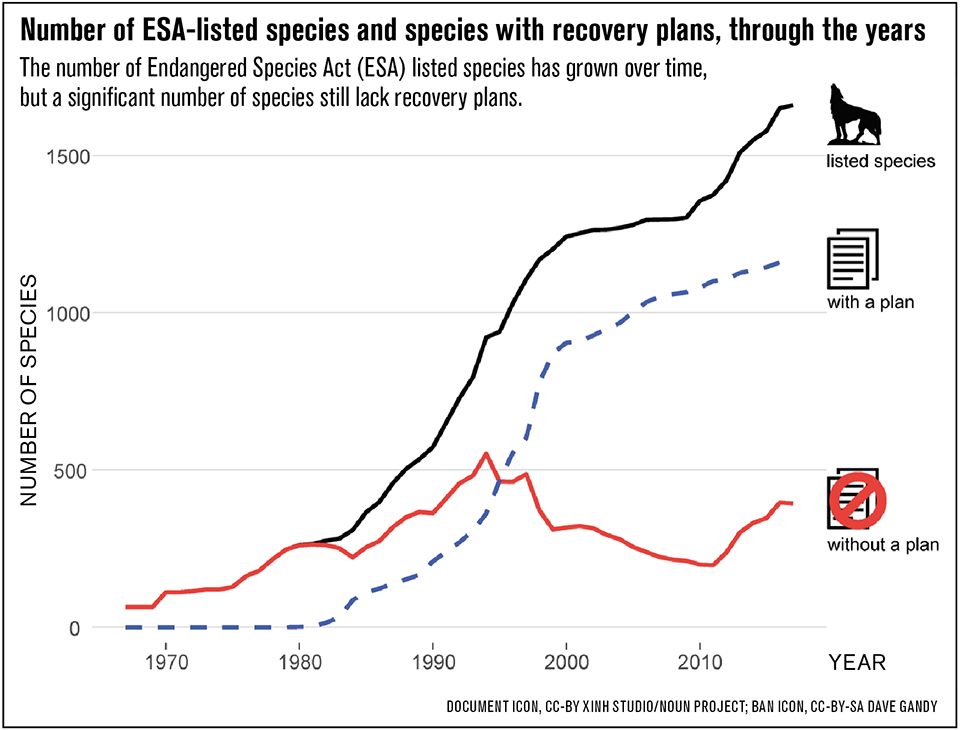A goal without a plan is just a wish.
—Antoine de Saint-Exupery
Behind every rebounding endangered species—like the grizzly bear, gray wolf and gray whale—lies a plan that takes recovery from hope to reality.
“Unfortunately given the chronic failure of Congress to provide enough funding for implementation of the Endangered Species Act (ESA) and an increasing number of species that need protection, nearly a quarter of ESA-listed species lack a recovery plan—even though it is essential to keeping an animal from going extinct,” says Jacob Malcom, director of Defenders’ Center for Conservation Innovation (CCI) and lead author of an analysis published in Conservation Letters, a journal of the Society for Conservation Biology. “Those species that have a recovery plan are too-often dependent on one more than two decades old.”

The goal of the analysis was to underscore the need for improvements in recovery planning and to offer solutions to address shortcomings. “Not only has our knowledge about these species likely advanced over these extended timeframes, but the biological status and threats have likely changed significantly,” says Malcom. For example, the indigo snake recovery plan was finalized in 1982, when poaching was a significant threat. Today, habitat destruction in the Southeast is the main problem. And, notes Malcom, few recovery plans consider the impacts of climate change on species.
CCI recommendations include a call for additional dedicated funding sources, more partnerships and administrative and technological reforms.
For more, visit defenders.org/CCIrecoveryplans.
Only select articles from Defenders are available online. To receive 4 issues annually of the full award-winning magazine, become a member of Defenders of Wildlife!
